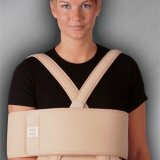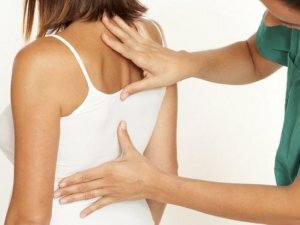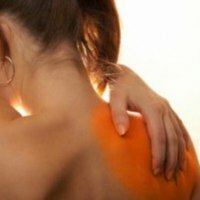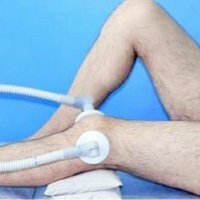Various injuries, dislocations, bruises, sprains and fractures
 Each child or adult can be offered various injuries: dislocations, bruises, rashes and fractures. The main thing - do not get confused, correctly diagnose, understand the prichna and provide first aid. Aware - it means armed!
Each child or adult can be offered various injuries: dislocations, bruises, rashes and fractures. The main thing - do not get confused, correctly diagnose, understand the prichna and provide first aid. Aware - it means armed!
So, let's talk about various injuries today. First, we learn what to do if you have bruises and strains.
Contusions
Contusion can occur separately, but also accompanies other types of damage.
Causes: damage can be caused by the fact that the victim fell from a low altitude or got hit by a blunt object.
Symptoms: painful sensations, swelling, bruising, loss of working capacity of the suffering organ are lost.
The pain may initially have an extraordinary strength, but disappear within a few hours. Tumescence appears gradually during the day. Bruises at first have a very bright color, but within 6 days it pales and acquires a variety of shades, which indicates a recovery.
The organ stops working as other symptoms increase. If the limb is injured, the patient will be able to bend it only with outside help, and even painful.
Kinds of bruises:
- Damage to the skin or subcutaneous tissue;
- Damage to internal organs.
Treatment: to relieve pain and reduce swelling apply to the problem area of ice or something else cooling. From edema will also protect the raising of the problem organ upward.
Pressing bandage helps to limit painful movements. In addition, provide the victim with peace.
Use medications for pain and inflammation( 2 - 3 times a day) for 10 days. This includes various kinds of ointments.
Do not apply such remedies to damaged skin. Do not use if your patient has a negative reaction to non-steroidal cures for inflammation!
Sprains
Causes: the problem will arise if a person overstrains the joint or performed an unusual motion for the joint.
Symptoms: pain, bruising, swelling in the joint area. There is a more intense and instantaneous limitation of the performance of the injured limb, compared with bruises.
The movement can not be done even with the help of another subject!
Types of sprains:
- Sprain of the ligaments( more often the ankle joint);
- Rupture of ligaments.
Treatment: use a pressure bandage, apply cold. Use medications for pain and inflammation( 2 - 3 times a day) for 10 days. This includes various kinds of ointments.
Do not apply such remedies to damaged skin. Do not use if your patient has a negative reaction to non-steroidal cures for inflammation!
If you suspect a severe strain or even a rupture, call for an ambulance!
Dislocations and fractures also cause a lot of discomfort and severe pain at the site of the injury.
Dislocation
Dislocation - displacement of joints, which in some cases can lead to damage to the joint bag, vessels, nerves.
Causes: the joint exerted excessive force or performed an unperformed movement.
Symptoms: pain and swelling in the joint zone are observed. Due to the displacement of the bones, the shape of the joint changes. The damaged limb becomes shorter, instantly there is a disturbance of movements.
Motion can not be done even with the help of another subject!
If you are in doubt about whether this is a dislocation or a fracture, check your fears with the help of an X-ray!
Dislocation:
- Dislocation of the shoulder, elbow, hip or ankle;
- Full or incomplete( half-twisted);
- Congenital or acquired;
- Complicated( ligaments, vessels, etc.);
- Closed or open( with skin damage);
- Habitual, ie, occurs again in the same place( from improper treatment or excessive stretching of the joint bag).
Treatment: only the specialist has the right to adjust the joint!
Apply a tight bandage, fix the affected limb with a tire( stick or any other object available at hand).
Suspend the injured arm by slipping the bandage over your head. Bring the victim to a horizontal position with a leg injury.
Small joints should be fixed in the emergency room, and for large ones, call an ambulance.
Fractures
Especially at risk athletes and unusually active people, individuals with fragile bones, extremely curious children. People here are also older than 60 years, because at this age there is a shortage of calcium. Babies under 7 years can avoid this problem, since their skeleton is extremely elastic.
Causes: the patient has failed to fall or hit. In the joint, there was a strong tension or an unusual movement.
Symptoms: all symptoms are like a dislocation, but unusual bone mobility is observed. The working capacity of the damaged limb is instantly lost.
Movement can not be done even with the help of another subject!
On the possible fracture of the spine indicates intolerable pain in the back.
Types of fractures:
- Open. The bone cut through the muscles, so the wound is treated and the bleeding stops.
- Closed.
- Partial( cracks).
Treatment: Take an anesthetic injection. Use ketorolac in the ampoule intramuscularly or novocaine( lidocaine) in the fracture zone( you can pierce the affected limb in a circle).Instead of a shot, use 2 painkillers, which the patient does not have allergies. Do not give the patient medication with sleeping pills! Otherwise, you will not be able to monitor the victim's condition.
It is necessary to impose a tight bandage, fix the diseased limb with a tire( stick or any other item available at hand) below and above the damage.
If a suspected fracture of the spine is to carry the victim on a stiff stretcher. Put the patient should 3 - 4 people, applying special care and trying to maintain the position of his body.
With a fracture of the cervical vertebrae, build a hard collar. As a material for it, cardboard or something like that suits. Above is the application of cotton wool;Wrap the construction with a bandage.
After all the measures taken, send the victim to the hospital, where they will make an x-ray and apply a cast.
Rules for the application of tires
For ankle, take the curved type of tire. Fix the method of "foot to foot".
- Immobilize the near joints( 2 or 3, depending on the situation).Thus, you remove unnecessary movements that can disturb the damaged area. Also, such measures help insure against dislocations of closely located joints. Find the broken bone in the right position. It also protects against damage to those organs that are close to damage.
- If the tire is too rigid, apply it on clothes, or under it in areas of friction with bony protrusions, place cotton, soft cloth.



